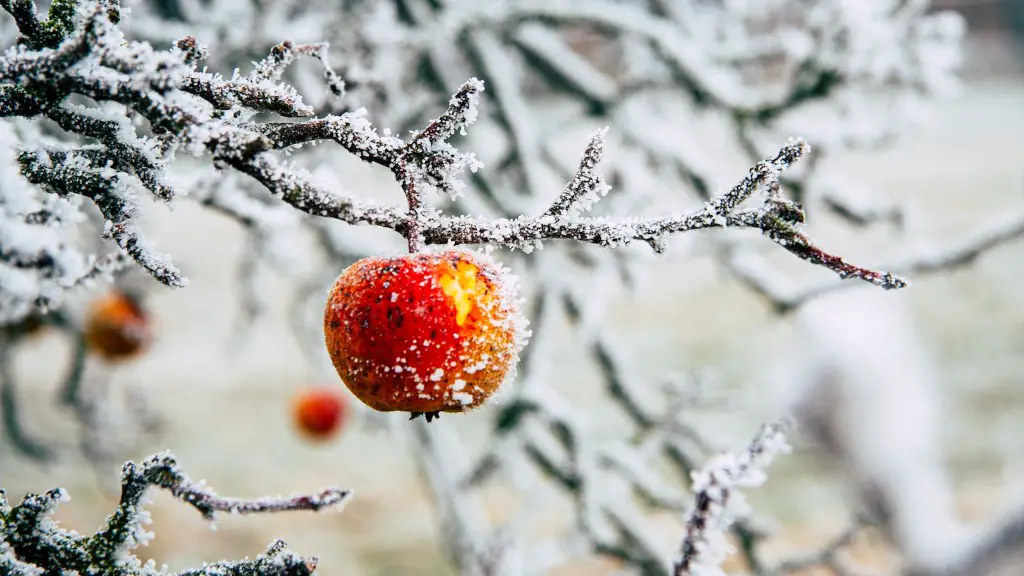House Palm Tree Basics
House palm trees, also known as indoor palms, are a common sight in our homes. These plants have a tropical look that adds a bit of warmth and character to any room. But, in order for them to thrive, they need special care and attention. Here’s what you need to know about taking care of a house palm tree.
Before a house palm tree is brought home, it’s important to consider the type of palm and its needs. Some palms are more tolerant of indoor conditions than others, and some require more light. A little research goes a long way! House palms should also have enough room for their roots to spread, so it’s important to choose a pot size that’s appropriate for your specific palm.
Adequate sunlight is key for healthy house palms. Try to place them in a room with plenty of south- or east-facing windows which get plenty of direct sunlight. Make sure to rotate the pot every few weeks so the palm grows evenly and with a balanced shape. If direct sunlight is not available, try to position the house palm near a fluorescent light, as long as the light is kept at least one foot away.
Appropriate water and fertilizer are also important components of a healthy house palm. Overwatering is one of the most common mistakes that come with house palms, so it’s important not to water them more than once a week. Allow the soil to dry up between waterings. Once a month, feed the palm tree a fertilizer that is specialized for tropical plants.
Keeping the house palm tree healthy also means ensuring that pests and diseases are kept at bay. Monitor the palm for signs of insects such as thrips, whiteflies, aphids, spider mites, mealybugs, and scales. Also watch for signs of various fungal diseases including brown fronds, root rot, and root decay. In mild cases, it is possible to treat the plant with certain pesticides or fungicides.
Finally, it’s important not to forget about pruning. Pruning can help palm trees develop a pleasing shape. Make sure to prune the palm seasonally, cutting back the oldest leaves at their base. This will help to keep the plant healthy.
Humidity Requirements
House palm trees are native to humid tropical regions and prefer warm, humid conditions. Household temperatures tend to be dry, particularly during the winter months, so you may need to make some adjustments to keep your palm happy. Try to bring a bit of moisture into the air by misting the leaves every morning with distilled water.
Household humidifiers can also help to keep a house palm tree healthy. Place the humidifier near the plant, but far enough so that the leaves don’t get wet. Alternately, you can group several house palms together in one room to increase the humidity in the air.
In the winter months, a pebble tray can also be beneficial as it helps to add humidity to the environment. Fill a tray with pebbles and add distilled water until the pebbles are almost covered. Place the pot on top of the tray and the water will evaporate and surround the plant with nice and moist air.
Finally, you can also try to create a mini terrarium for your house palm. Place the palm in a glass bowl filled with damp peat moss and voila! You have created a humid environment for your house palm tree that simulates its natural environment.
Disease Prevention
House palms are susceptible to many diseases, so it’s important to take the necessary precautions to prevent infestations and diseases. Most importantly, make sure that you purchase healthy plants—look for any signs of disease such as discoloration or frayed leaves.
Once the palm tree is home, create a routine to make sure the plant is as healthy as possible. Regularly inspect the leaves and stems for insects and diseases. Pluck off any dead leaves and cut off frayed or discolored ends. Make sure to clean the leaves with a mister or cloth to remove dust and dirt.
In order to keep diseases from spreading, avoid splashing water on the leaves. Water the plant from the top and let the water soak into the soil. Lastly, always use sterilized tools for pruning and never reuse soil from other plants. By following a good routine, you can keep your house palm tree healthy and beautiful for many years.
Fertilizing Considerations
Fertilization is an important part of keeping a house palm tree healthy. The frequency and type of fertilizer depend on the type of palm and the season, so it’s important to do a bit of research before applying fertilizer. In general, it’s best to use a balanced fertilizer—one with nitrogen, phosphorus, and potassium—for house palms.
If you’re using a liquid fertilizer, apply it once a month during the spring and summer. During the winter, you can forget about applying fertilizer as the cold temperatures slow down the growth of the palm tree. If you use a slow-release fertilizer, apply it at the beginning of the season and once during the summer.
It’s important not to over-fertilize the house palms as it can cause more harm than good. Always dilute the fertilizer to half strength and pay attention to the amount you’re applying. Too much fertilizer can lead to fertilizer burn, which is one of the most common mistakes when it comes to fertilizing house palm trees.
Troubleshooting Common Problems
No matter how much effort and care you put into taking care of your house palm tree, there may be times when the palm doesn’t look as healthy as you’d like.Fortunately, there are several steps you can take to troubleshoot some common problems.
If your house palm tree has yellowing leaves, for example, inspect the plant carefully for signs of disease. If the yellowing leaves are at the bottom of the plant and the new leaves are green, it could be a sign of nutrient deficiencies. Try adding a balanced fertilizer to the soil.
If the new leaves are also yellow then the problem may be due to underwatering or overwatering. Allow the soil to dry up between waterings and make sure the soil is well-draining. If overwatering is the problem, try using a pot with drain holes and avoid standing water.
Wilted leaves are another common problem with house palms. This can be a sign of underwatering or of its environment being too warm or too dry. Make sure the pot has enough water, the soil is well-draining, and that there’s enough humidity in the air.
Final Considerations
House palm trees make a stunning addition to our homes, and with the right care, these palms can last for many years. It’s important to choose the right plant, provide it with plenty of sunlight and humidity, and give it enough water and fertilizer. Pay close attention to signs of pests and diseases and make sure to prune the palm in order to encourage healthy growth.
House palm trees can be a bit of a challenge to take care of, but with some patience and trial and error, you’ll soon have a thriving and beautiful palm tree that will add a bit of lush tropical life to your home.


